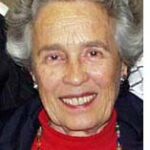By Eileen Wingard

SAN DIEGO — Surrounded by the grandeur of the renovated Jacobs Music Center and with the orchestra’s brilliant music director, Raphael Payare, on the podium, a large audience enjoyed the February 9 matinee concert of the San Diego Symphony Orchestra.
Seated on my right were two fifth-grade girls from Carlsbad who were studying violin. On my left was a 98-year-old woman and her 100-year-old gentleman friend, both long time symphony attendees. The audience was a mixture of youthful faces and elderly patrons.
The concert’s opening work, Richard Strauss’ tone poem, Death and Transfiguration, was preceded by the recitation of the poem Strauss asked his friend, poet Alexander Ritter, to write depicting Strauss’ vision of the music. This poem in its English translation was dramatically recited by Victor Morris, whose credits include acting at the Old Globe, singing with the San Diego Opera and playing trumpet with the Westminister Orchestra.
Death and Transfiguration was written when the composer was 25 years old, the year after his tone poem, Don Juan, established his reputation as a great composer. This tone poem was even more ambitious. The programmatic piece is in four connected sections. The first depicts the dying man; the second, his struggle with death; the third his life, from innocent childhood to adulthood and old age; and the final section is the transfiguration. The tone poem opens softly with irregular beats in the lower strings and timpani, the sounds of a dying heart. The flute soon enters with the transfiguration theme. The orchestra gave the work a singularly dramatic reading.
The San Diego Symphony Orchestra’s own principal viola, Chi-Yuan Chen, was the soloist in William Walton’s Viola Concerto, a three-movement work by the late British composer.
The Taiwanese-born artist has held the Karen and Warren Kessler Chair as Principal Viola in the San Diego Symphony Orchestra since 2014. He is winner of top prizes in the Fischoff Chamber Music Competition and in the International Paris Viola Competition Ville d’Avrey. Before coming to the US, he performed with orchestras in Taiwan and soloed with the National Symphony of Taiwan, the Taipei Civic Orchestra and the National Defense Symphony Orchestra.
Chen played the Walton work with great confidence and tonal beauty. The outer two movements are slow, flanking a rapid central movement. There are intermittent cadenza-like passages where Chen’s Gasparo Bertolotti de Salo viola shone.
The final work on the program, Brahms’ Symphony #2, bathed the hall in glorious sound. This work was written while Brahms was on summer vacation in a small town on an Alpine lake in southern Austria. The opening themes of the first movement, although they begin with clouded melancholy, soon brighten with sounds of sunshine and ambling streams, recalling the melody of his famous lullaby. The second movement begins with an elongated cello theme that permeates the segment.
The third movement opens with an oboe solo, beautifully rendered by principal oboe, Sarah Skusker, and the final movement closed with the triumphant sounds of the brass, dominated by the excellent trombone and tuba section, one of the most stirring conclusions in symphonic literature.
Once again, this concert reaffirmed the wonderful acoustics of the Jacobs Music Center and the stellar performances of our San Diego Symphony Orchestra under the direction of Raphael Payare.
*
Eileen Wingard is a freelance writer specializing in coverage of the arts.